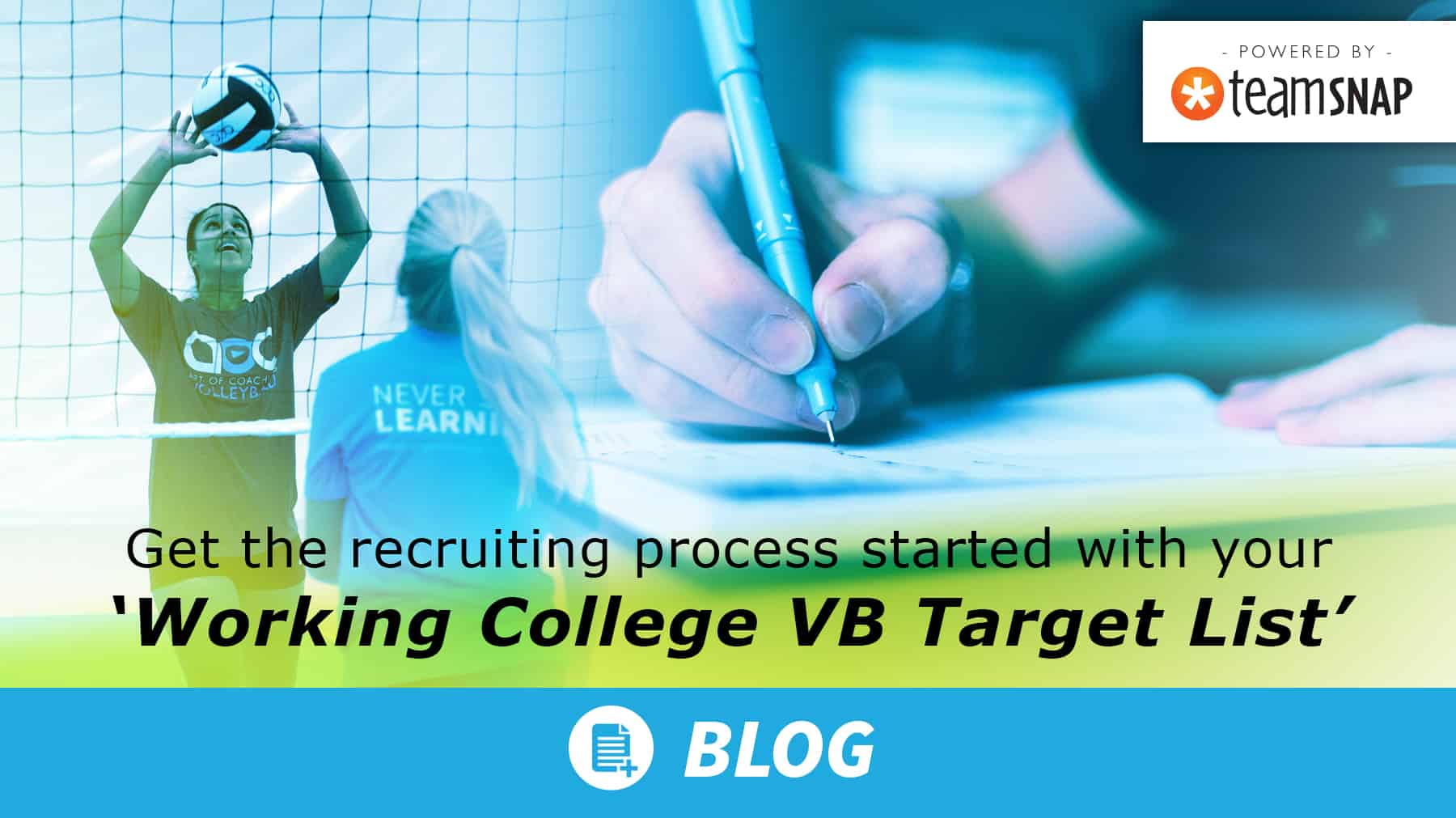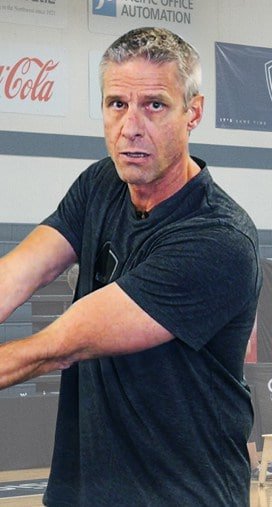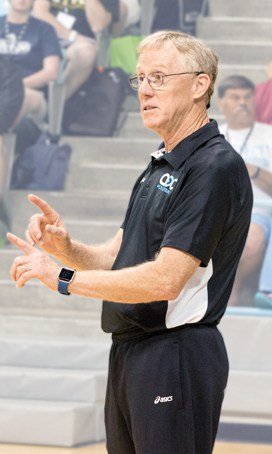

Dianne DeNecochea | Former Pro Beach Player, College Volleyball Recruiting Advisor
“Once begun, the job’s half done.”
This is a phrase I’ve heard a lot in my life. And with the college volleyball recruiting process, knowing how to get started is key. If you begin in an organized and systematic way, you’re on your way to playing volleyball at the next level.
I believe the heart and soul of this recruiting process is creating a Working College VB Target List. If you can get this right, you’ll have an advantage over athletes who aren’t as well organized and proactive.
By “working,” I mean an ever-evolving list based on the information and gut feelings you get throughout the process. Eventually, a school on this list will be the one where you play college volleyball. But before that happens, the list will be a great way to help you evaluate your options. It’s very personal and specific to you as a volleyball player. And even though it’s in spreadsheet form and seems very systematic, it represents your dreams and aspirations, disappointments, and all the hard work you’ve done throughout the recruiting process.
Seek out schools that fill your needs
As a volleyball player, you have to be proactive in your search for the school, program and coaching staff that will be right for you. They aren’t going to come knocking on your door.
The schools that do reach out to you will be possibilities on your list, but you also should have an idea of the schools where you want to go and reach out to them. If you rely only on schools that contact you, you could be settling for one that’s not the right fit.
The recruiting process is both systematic and from the heart. These are obviously very different things, but when you have the perfect combo of the 2, you can’t go wrong.
How to prepare your list
Your Working College VB Target List should be a Google Sheet that you create as a shared document with your parents. I recommend putting 20 schools on this list because that’s a manageable number. When one school falls off, add another school. That’s why it’s a “working” list – it’s working and evolving for you.
Organizing your list
The first TAB is your Top List of 20 schools. The second TAB is your “Secondary List.” These are schools that have dropped off your Top List. I give my clients a template to work from, or I populate it for them and then we work on the list together throughout the process.
Key columns for the list are:
- school name
- conference
- city
- state
- coach names
- coach’s emails
- coach’s phones
You should also have a column called “notes and activity” to document every time you contact coaches. These notes should include the date, exactly what you did (intro email, phone call, follow-up email, sent video, etc.) and whatever was communicated back from the coach. Have the most recent date first so you can easily keep track of the last time you contacted the school and so you will know when it's time to reach out to them again.
Quick tip: Coaches tell me frequently that they prefer athletes to ALWAYS send intro emails to the head coach and CC the rest of the coaching staff, which will usually be 3 coaches total. If an assistant coach responds, respond back and CC the head coach and the 3rd coach. Always keep all the coaches in the loop with what is going on with you. This allows them to get to know you, your personality and your diligence in communicating, which speaks volumes to coaches before they even see you play.
If a school doesn’t need your position in your grad year, it should move immediately to the “Secondary List.” If a school has already committed a player at your position, it should also move to “Secondary List.”
If a school responds to your intro email saying they DO need your position in your grad year, they should move to the top of the list. I like to color code these schools green as “ACTIVE.” You should keep in touch with these schools every week to 2 weeks.
How does a school make it to your “Working College VB Target List” in the first place? Here are 3 benchmarks:
- All schools that have contacted you through camp brochures, mass emails, letters, etc. If, after researching the school, you are interested in them, add the school to the list. And here’s a tip: Look at ALL schools in their conference. If you are at this school’s level of play after the coaching staff has seen you play, then you are at the level of the entire conference, so it’s a good idea to consider those schools too.
. - What area of the country are you interested in? Google “NCAA College Volleyball Division 1 Conferences” and look at all 30 conferences. Pick conferences you are interested in based on geography, a school size that you like, academic level of interest, big sports/not a big sports school, etc. You can also Google Division 2 and Division 3 conferences to find ALL of the options.
. - What are you looking for from a scholarship perspective? Division 1 schools have more full scholarships available. Ivy League schools are “financial needs based,” as are Division 3. There are partial scholarships available at many Division 2 schools and for most sand volleyball programs. All of these should be factored in when you decide which schools to put on your list.
In the end, there are hundreds of schools where you can play volleyball in college. Create a list and follow the guidelines I’ve outlined to get started. The list will become a reflection of you, your work ethic and your desire to play volleyball in college. It will keep you organized and on top of your recruiting process. In time, it will help you find the school and the volleyball program that’s best for you athletically and academically.
Dianne DeNecochea played indoor volleyball at the University of Tennessee and was inducted into the school’s Hall of Fame in 2007. She was a top pro beach player from 1999 to 2013. Since her retirement as a player, she has formed a company, ProActive Volley, that helps young players with the college recruiting process. She also coaches club volleyball in the 12's and 14's age groups in San Diego.




